[In this episode of The Chinesium Mine we can’t resist the urge to dismantle the new power bank]
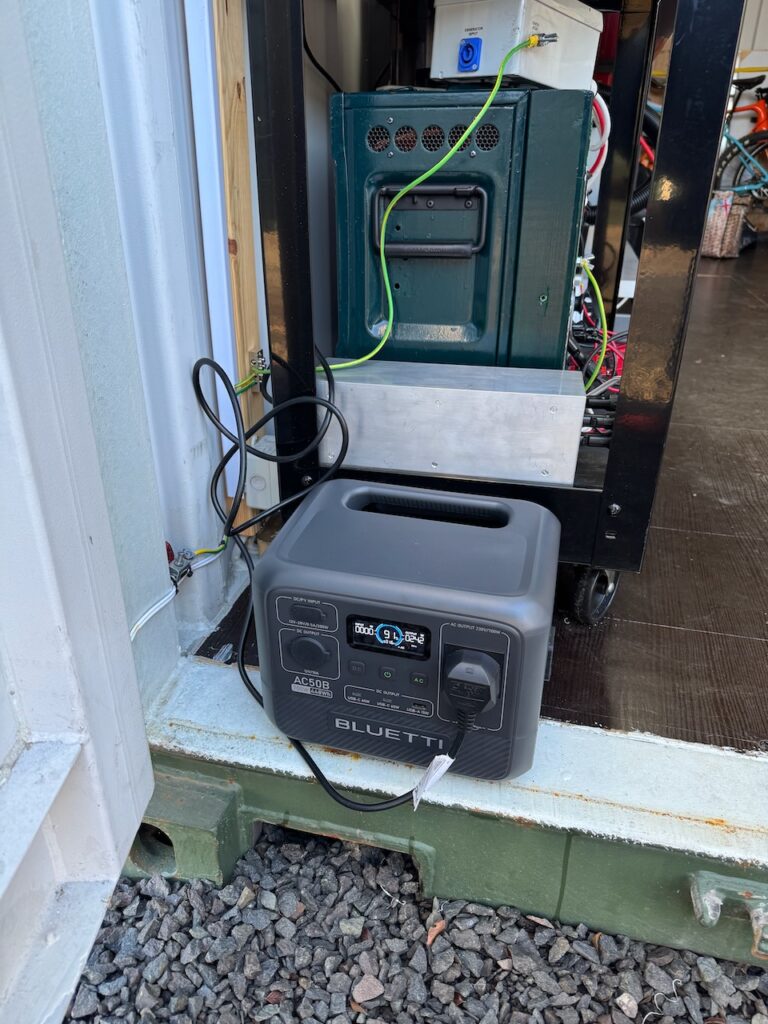
During my stay at Container Labs I got a Bluetti AC50B in the Black Friday sales. It was very useful as a kind of bucket of electricity that could be charged at home and used to recharge the main batteries on site.
I liked the Bluetti because it was cheap, used the safer LFP chemistry, and would accept a 230V AC input directly, unlike many other brands that need an external power brick to charge off mains. During my time at Container Labs it worked reliably and appeared to meet its advertised energy, power and runtime specs (700W, 448Wh) just fine.
As usual I couldn’t leave it alone and had to mess around with it.
AC UPS functionality
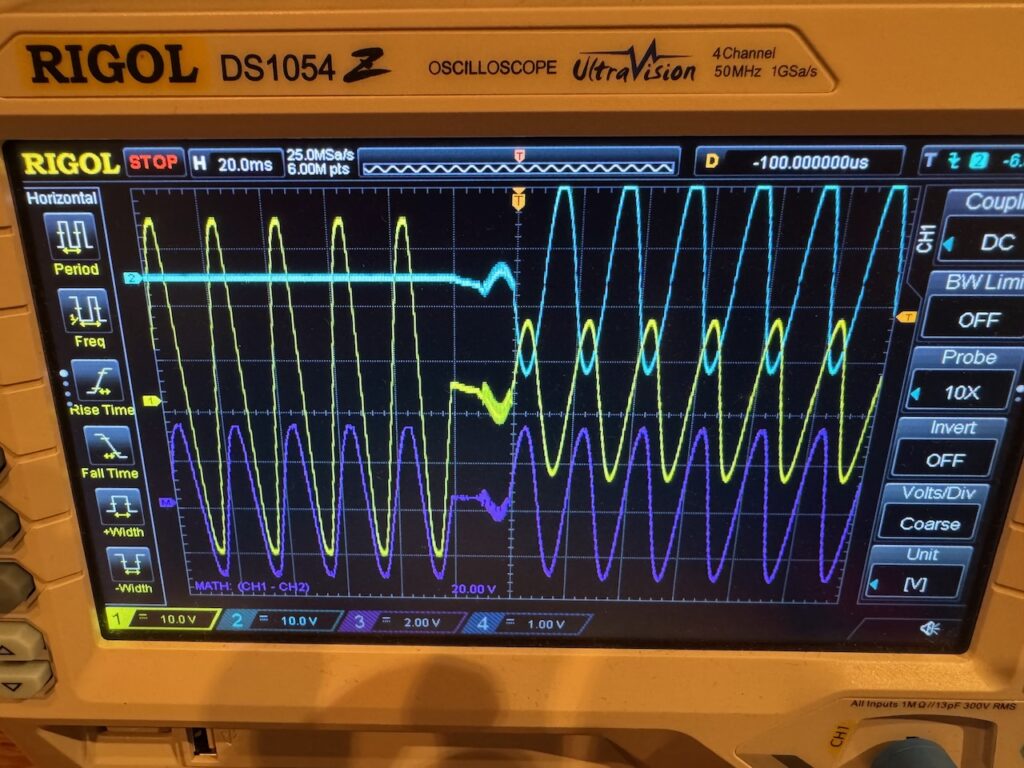
I checked out the behaviour when used as a UPS, by hooking up oscilloscope channels 1 and 2 to the live and neutral outputs from the front panel AC outlet, and connecting and disconnecting the mains input.
This scope shot tells us a lot about how the unit works inside. Even before taking it apart, we can see that it must use a bidirectional inverter/charger to transfer power between the AC side and the battery.
When AC mains is connected, it is passed through to the front panel outlet, and the inverter/charger charges the battery. The changeover of the front panel outlet from inverter to mains is seamless, as it synchronises to the mains frequency/phase before toggling the relay.
When the mains is disconnected, it quickly switches over to inverting mode. The switch back to inverter on loss of mains entails an interruption of about 20ms, a bit more than a dedicated UPS, but I’d be surprised if any load would be upset by this. I tried it several times and chose the worst looking transfer for my scope shot.
So overall it’s quite usable as a UPS. And they even used a double pole relay to change over both live and neutral. Some cheap UPSs only change over the live, and can feed voltage back into the neutral pin of the plug after it’s pulled out of the wall.
1 point for UPS functionality and not needing a power brick.
Other AC trivia
The output frequency is selectable as 50 or 60Hz in the Bluetti app. As I tested software in a previous life, I tried setting it to 60Hz before plugging it into our 50Hz mains. The unit wasn’t bothered, the frequency simply ramped down to 50 as part of the synchronisation process, and remained at 50 the next time mains was disconnected.
The power quality is decent, like most “true sine wave” inverters the waveform looks closer to a sine wave than the actual mains supply. (though again like most inverters, it’s easy to mess that nice waveform up with a nonlinear load)
With the inverter turned on but no load, the runtime displays as 41 hours. We can infer an idle power consumption of about 11W.
I also had a look at the current drawn from the mains when the unit is charging. Not the most sinusoidal, and a bit noisy, but it’s definitely making some kind of effort at power factor correction. (blue trace is current, yellow trace is mains voltage for reference, at 275W charging power)
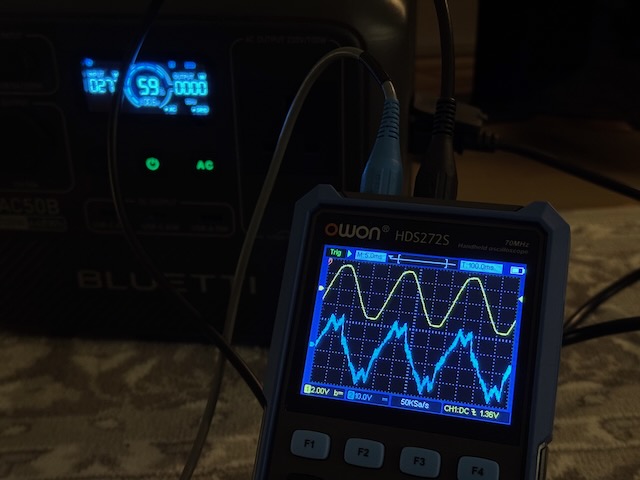
Charging from the Lister diesel generator was also a success. It would drop out when a heavy load was removed from the generator, but always restarted.
Teardown
Next I took it apart. 1 point for not having any “warranty void if removed” stickers 😀
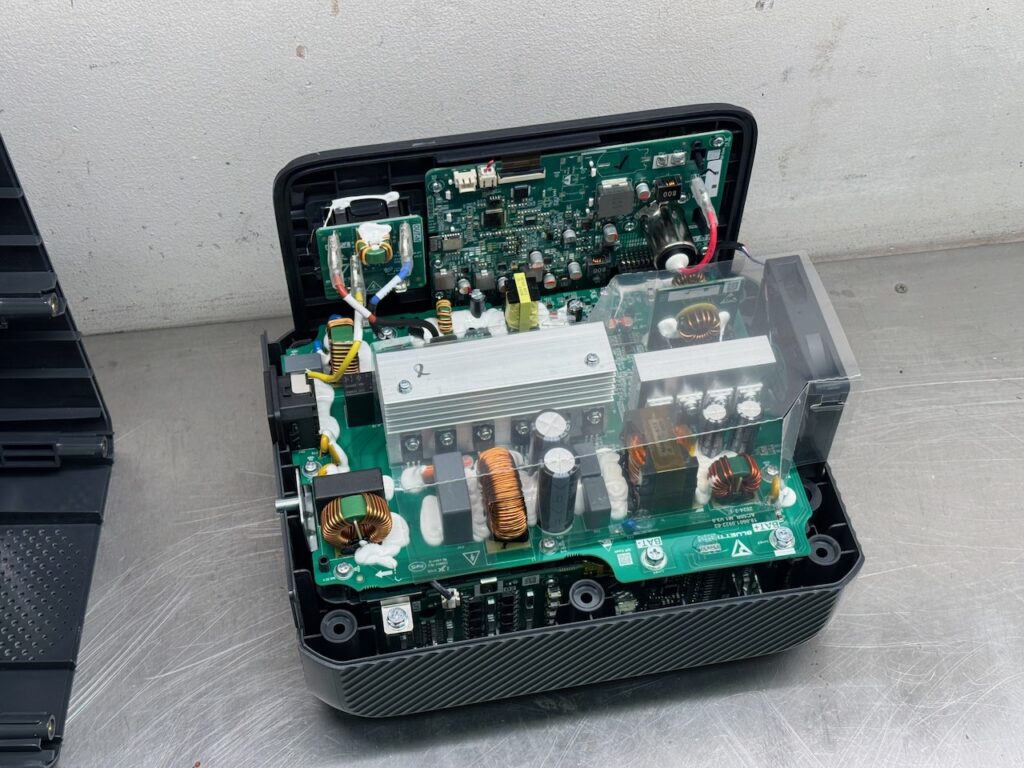
The build quality seems surprisingly good. The battery proper is in the bottom of the case. It looks like a bunch of large cylindrical cells.
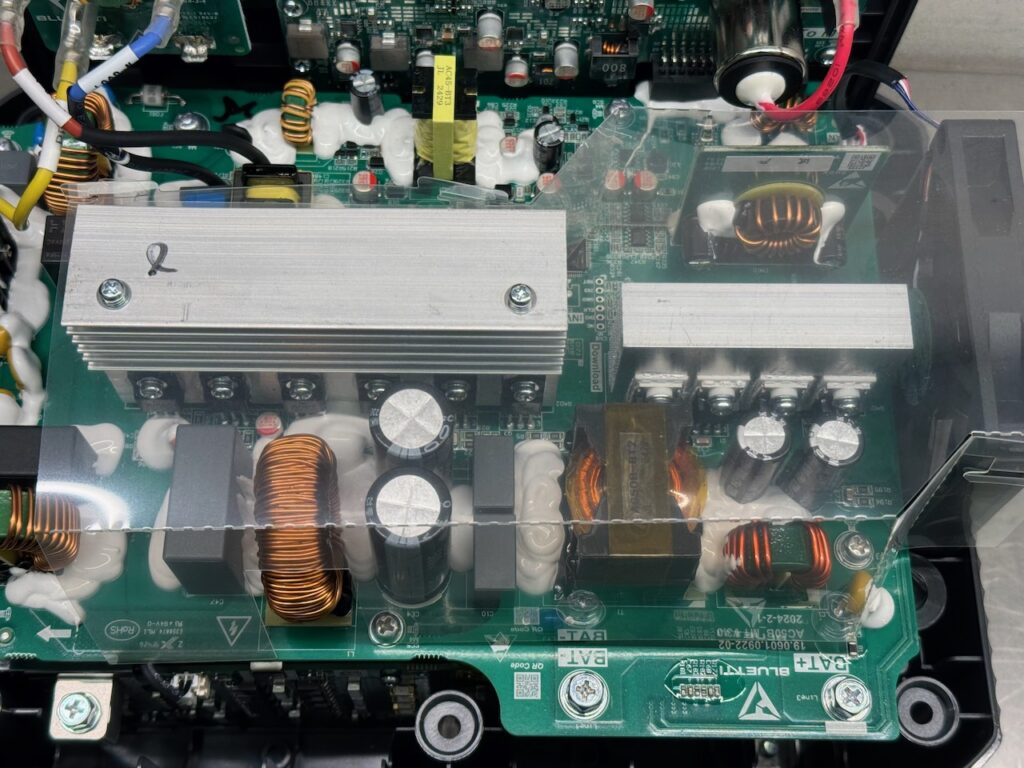
Most of the power electronics is on this PCB. Below the 2 large heatsinks we can see the circuitry for the inverter, which matches my earlier guess of a bidirectional inverter/charger.
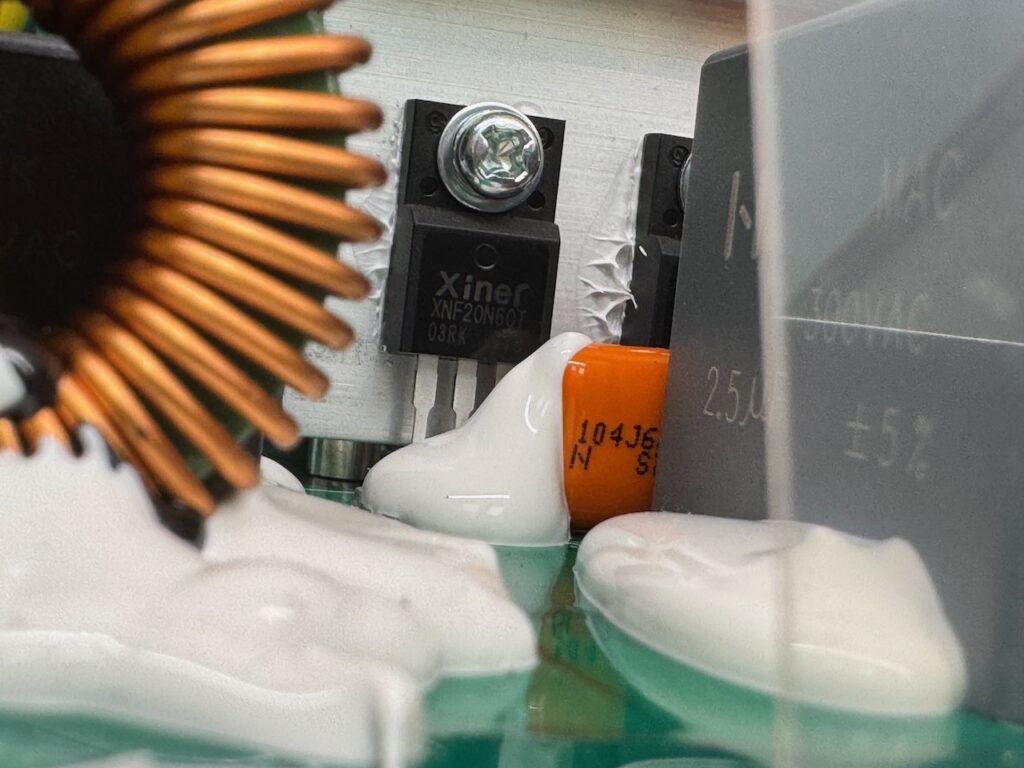
On the left heatsink we can see 6 XNF20N60T IGBTs from Shenzhen Invsemi. (£0.53 each if you buy 50.)
4 of these IGBTs function as the inverter H bridge when inverting, and rectify the incoming mains when charging. The remaining 2 function as diodes when the unit is inverting, to rectify the high frequency output of the DC-DC stage. When charging, these act as a half bridge driver.
On the right heatsink we can see a full bridge of 4 low voltage MOSFETs that drive the DC-DC stage when inverting. They must work as a rectifier when charging, but I didn’t figure out if they went to the extra hassle of synchronous rectification.
The DC-DC topology is probably a LLC with the inductance integrated in the transformer, and resonant capacitors on the secondary side.
I believe the vertical PCB above the MOSFET heatsink is the MPPT for the PV/DC input.
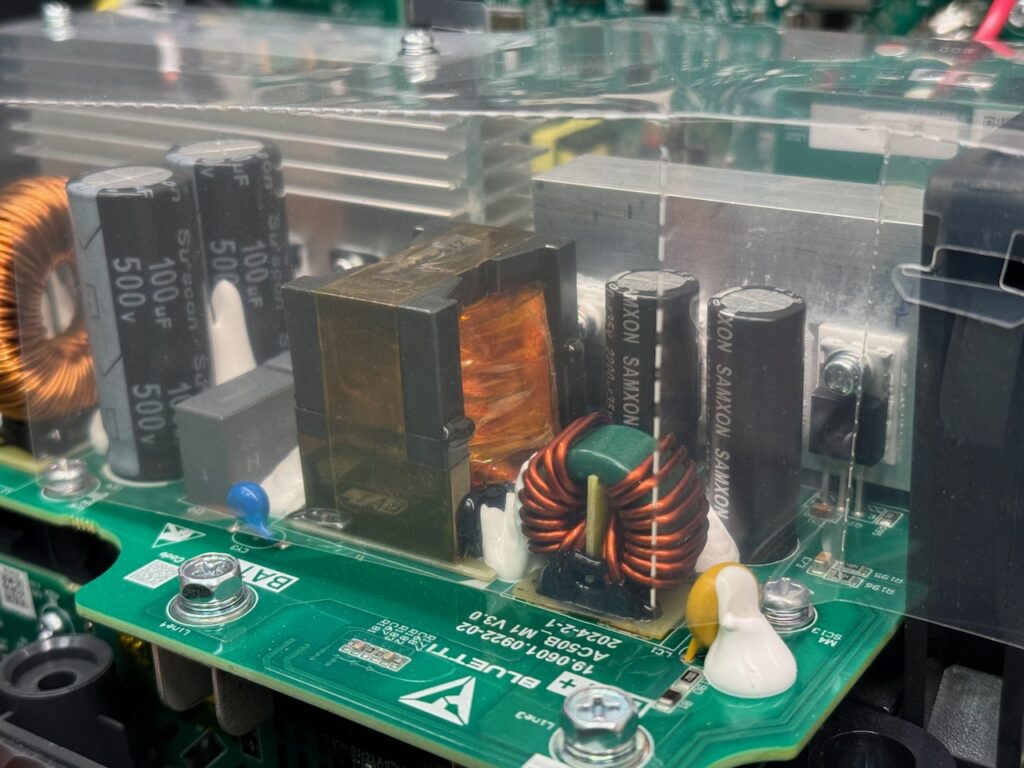
A better view of the DC-DC converter transformer. Our old friend triple insulated Litz wire is doing most of the work here as usual. I couldn’t make out a part number for the MOSFETs.
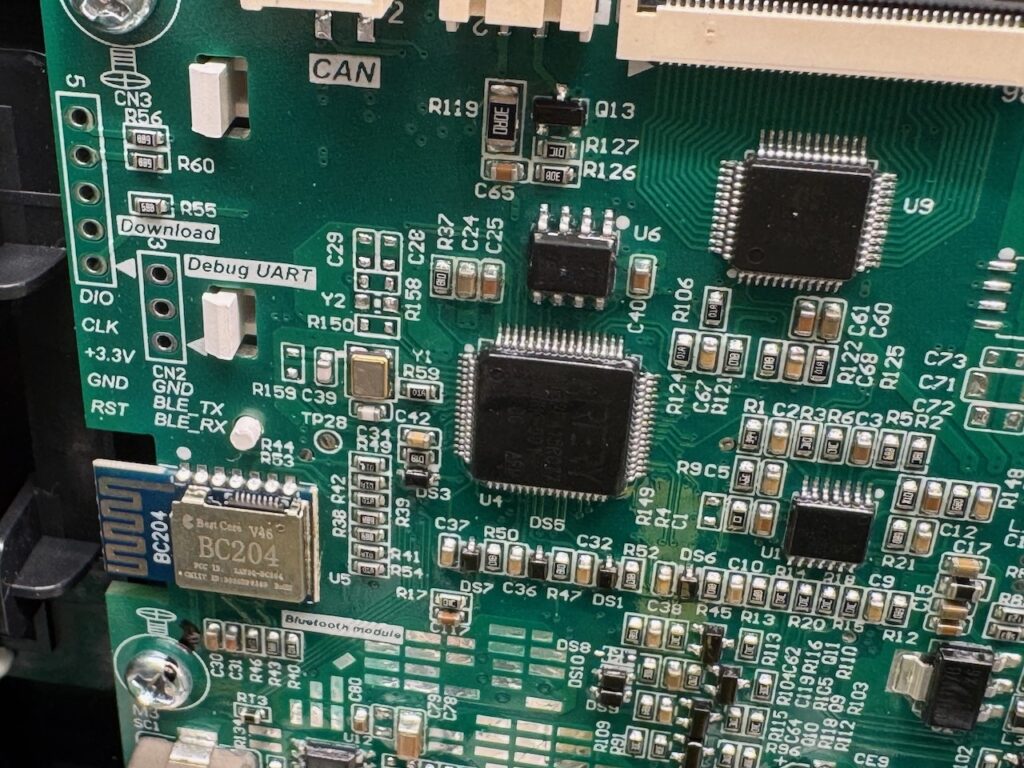
I found exactly one microcontroller in the whole unit. An Artery AT32F415RBT7. This is an ARM Cortex-M4 with 32K of SRAM, 128K of flash, a 2MS/s 12 bit ADC… Yours for $0.99 in quantity 50.
(It wouldn’t surprise me if there was another controller chip of some kind on the underside of the power board, but I didn’t dismantle that far.)
I was fairly sure everything in this unit would be Chinese, but Artery are actually Taiwanese. Their chips seem heavily inspired by the STM32.
Smart functionality
We can also see a Bluetooth module in this pic. The Bluetti smartphone app works fine, but there’s absolutely no security or pairing process. You just install on your phone and connect to any Bluetti within range.
Minus one point for cybersecurity. I’m sure if I took this to a seriously nerdy event like EMF it would be hacked and remotely self-destructed in 5 minutes. Todo: figure out how to add a switch that disables the Bluetooth.
Direct battery output?
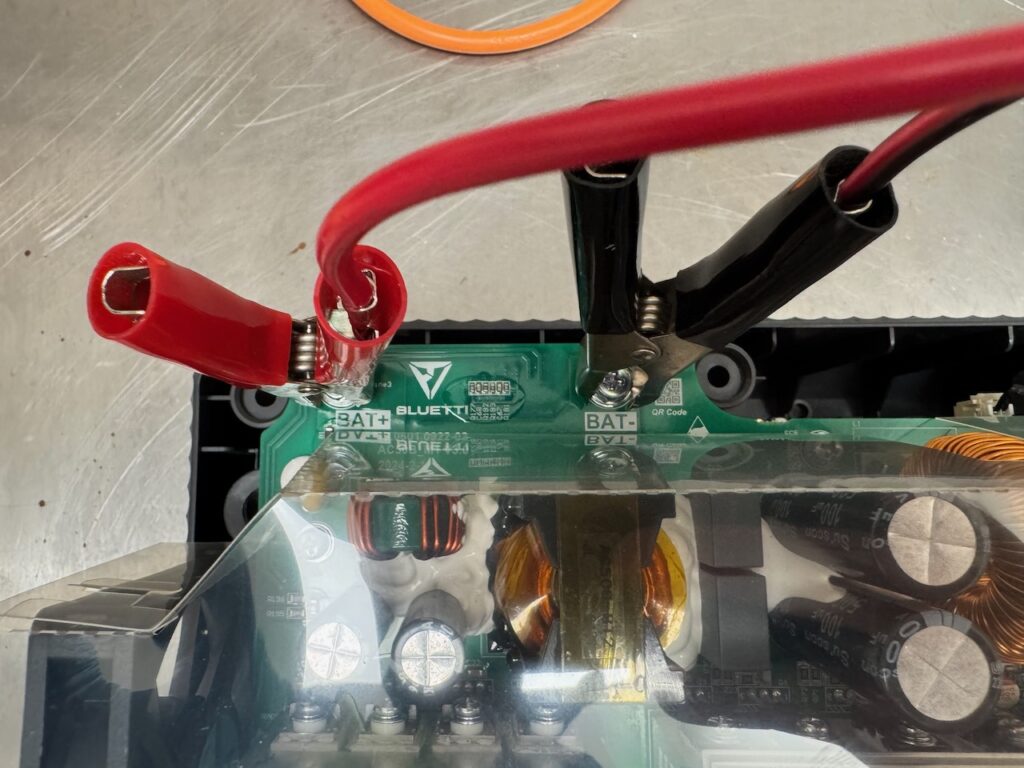
I couldn’t resist trying to draw power directly from those clearly marked BAT+ and BAT- terminals.
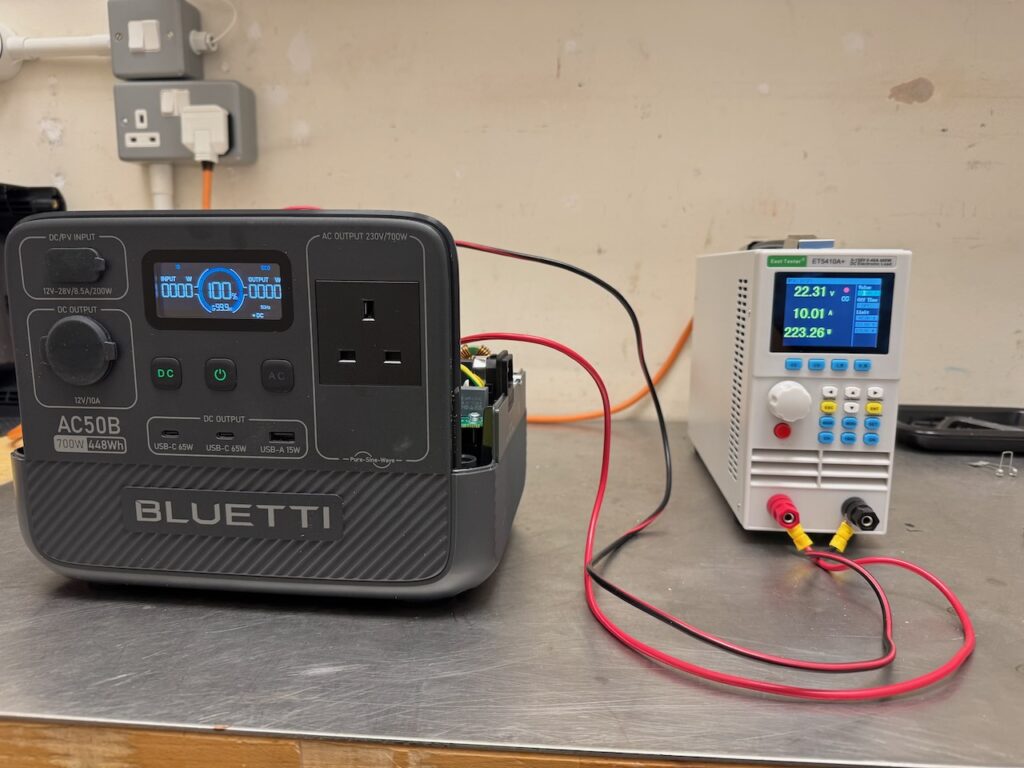
It worked, I was able to max out the electronic load and the Bluetti didn’t complain. At 22.3 volts, we can guess the battery must be 7 LFP cells in series.
The output power display showed 0 and the runtime remained at 99.9 hours the whole time, but the SOC display started to decrease. Half a point for “expandability” 🙂
Only half a point because I suspect something awful would happen if these terminals got shorted out or the battery was drained completely through them.
DC inputs and outputs
The DC/PV input is an XT60 connector. Bluetti supply two adaptor cables: a cigarette lighter plug, and a MC4. I tested it with 12 and 24V power supplies and it measured up to the rated 8.5A and 200W. I didn’t actually try it with a solar panel.
The 12V cigarette lighter output is 12.0V exactly and has pretty much no overload capacity. It trips off just above 10A even for short pulses. of current draw. This is to be expected considering that it’s derived from a 24V battery with a DC-DC converter, and I haven’t had any trouble with it in practice: the highest powered device I have that plugs into a cigarette lighter outlet is a 12V air compressor, and it ran that.
The USB ports work as expected. The USB-C ones will run a laptop and charge DeWalt tool batteries.
One point for comprehensive DC connectivity, and for not having any barrel jacks (aka DC5521)- arguably the worst DC power connector in the world!
DC UPS?
Would it work as a DC UPS to power Raspberry Pis and the like from the USB ports? I can’t say for sure that it doesn’t have some evil quirk that would stop this working, but I didn’t see any issues.
It can charge from AC or DC while powering DC loads. There is no float stage to the charging. The charger toggles on and off and the battery micro cycles between 98 and 100%. Or maybe it was 95 and 100%. Either way it seems like a reasonable charging algorithm, given that lithium batteries don’t like being held at high voltage indefinitely.
I also didn’t observe any overzealous auto shutdown of the DC outputs if the load didn’t draw current for a long time.
Conclusion
All in all, this is a perfectly good power bank. The only thing that leaves a slightly cheesy taste in my mouth is the “Power Lifting” feature, which is claimed to allow the unit to run appliances rated up to 1000W. It does this by simply letting the output voltage sag to about 200V under heavy load, so a resistive load that would draw 1000W at 230V only draws 700.

So as an engineer I feel cheated, but as a human being, I got coffee and porridge from this 1000 watt travel kettle (drawing 715W as you can see) Grudgingly then I give it an extra half point for the “Power Sagging” feature.
The final verdict: with 4 points this is
🀄️🀄️🀄️🀄️ Reactor grade Chinesium
A genuinely innovative product developed in China. The Chinese might not have invented the portable power station genre (that credit probably goes to the American founders of Goal Zero) but they surely have designed some nice units.